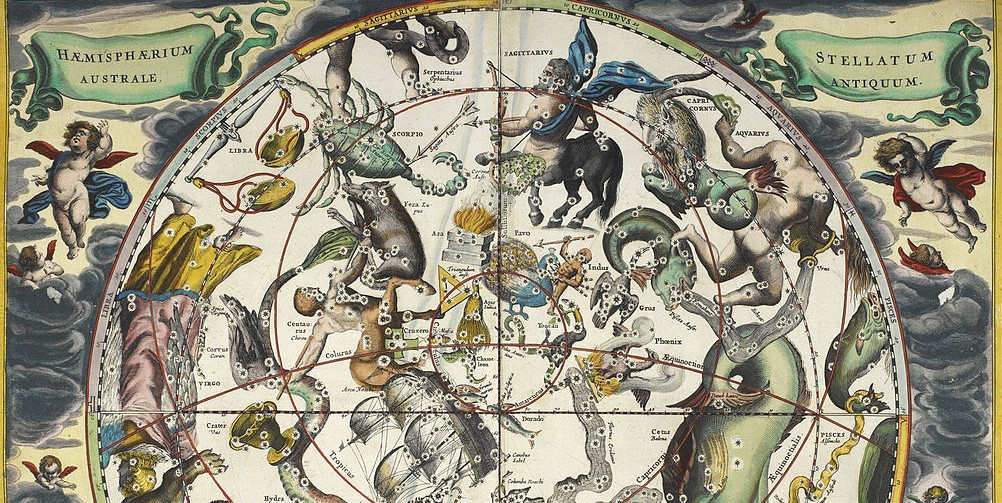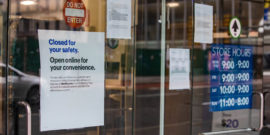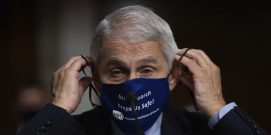No, it’s not just you. We’re all—nation-states included—in over our heads.
When Astrologers Rule
The origin of the word “lot” is the Teutonic hleut, which was the pebble that priests and judges cast to make decisions. It is also the source of the Italian lotteria, and the French loterie, which eventually came to refer to games of chance. However, in both Dutch and English, the word “lot” also refers to man’s destiny. The two uses of the word are not accidental. When risks are incalculable, political leaders must still point to some legitimating justification for their decisions.
Rulers have always created institutions that centralized and legitimized decisions, guided by religion, astrology, and—today—by elaborate models wearing masks of “science.” A better approach would see a variety of qualified people, financed by diverse sources, making independent decisions and pursuing a variety of solutions when societies face unprecedented situations.
From Religion to Astrology to “Scientific” Modeling
Since antiquity, people have invented mazes of institutions and traditions that legitimized decisions made under conditions of uncertainty. These created the perception that either there was no uncertainty or the uncertainty was mitigated. Priests used certain devices exclusively during religious rituals to make important decisions—what astrologers and eventually academics would do centuries later, only instead of throwing devices, they drew on what John F. Kennedy considered to be “facile theories.”
“The lot is cast into the lap, but the whole disposing thereof is of the Lord,” says Proverbs 16:33, expressing that the divine will is reflected in the fall of lots, and so decisions made on that basis are legitimate. The priesthood regularly drew them to discover God’s will, electing Saul as King of Israel, for example (I Sam. 10:20 –1). In societies that anthropologists label “primitive,” a few select members had the right to throw bones, shells, sticks, and stones to make decisions. Later, ancient Greeks flocked to oracles to seek guidance in public affairs. No decision on engagement in war, on signing a treaty, or on the enactment of laws was made without oracular approval.
This should not surprise us. When societies are small in number and isolated, most risks cannot be assessed: specialization is limited by population size. We consider outcomes based on casting lots, throwing dices, or following oracles as matters of chance. But a society that believes that spiritual power controls the outcome and that holds the priesthood in esteem will perceive the lot as a legitimate tool for making decisions.
Later, monarchs and governments relied on astrology, which they perceived as an exact science for a century. In England, from the time of Elizabeth to Charles II, the ruling classes consulted astrologers openly. They would pinpoint dates for prosperous journeys, for setting up shops, or for starting the march of an army. Books presenting complex geometrical calculations linking decisions to the position of stars offered legitimacy for forecasts. The mathematical complexity, like “sacred” languages of religions in earlier times—or statistical modeling now—drew on often impenetrable jargon, sustaining the exclusivity of those who practiced it.
Today, in the face of uncertainty, we would think it utterly foolish to make decisions on the basis of astrology. Governments and the Federal Reserve now consult economists and epidemiologists—suggesting that “science” guides them. But it turns out that this is little more than a mask.
Practitioners of macroeconomics and epidemiology are immersed mainly in modeling. Most economists have no business experience, and most epidemiologists are trained, at best, in mathematics and statistics, but with little medical or hospital experience. As astrology once did, macroeconomics and epidemiology have been wearing the “masks” of science with data pulled out of hats, equations, forecasts, professors, journals, books published by academic presses, national and international bureaucracies—all sustaining a sense of exclusive legitimacy. The common citizen dares not question such justifications. But it is all a veneer.
There is no science for making decisions when facing uncertainty. “Incalculable risks” are just that—incalculable.
Macroeconomics, for example, was based on a jargon John Maynard Keynes invented in his General Theory and which his followers developed to esoteric depth (though Keynes referred to them as “fools”). Keynes and his followers claimed that government bureaucracies, collaborating with central banks, could create eternal prosperity by solving a few equations with a few unknowns and mitigate the hoi polloi’s randomly fluctuating “animal spirits” (from which, of course, politicians are exempt). It took decades of disastrous policy mistakes based on these Keynesian masks for managing uncertainty for them to be gradually discarded.
A similar process is unfolding now. The COVID-19 crisis brought epidemiology into the limelight. Yet it turns out that epidemiologists, like macroeconomists, are mainly modelers. An online summary captures the way many university websites describe their programs:
Epidemiology programs provide concentrated training in concepts, skills, and methodology with a research focus. It includes a flexible mix of courses in epidemiology and biostatistics. Graduates are trained to:
Collect epidemiologic data ethically
Conduct epidemiologic analysis using various regression models
Describe models of disease control
Identify key sources of epidemiologic data…
It is not surprising that epidemiologists’ forecasts predicted wildly different “flattening” curves (depending on the particular college teaching the subject) – not much different from macroeconomists’ now-discarded “Phillips Curve,” which once passed for eternal truth.
What is to be Done?
Yet governments must be prepared for dealing with epidemics, since individual responsibility is not enough to prevent transmission of infections. But as COVID-19 spread, governments tended to rely on one particular “school of thought”—one which, not surprisingly, increased their powers, rather than diffused it.
After all, there have been competing epidemiological models. The Imperial College model, which served as main guidance for policy in the both the US and Western Europe, has been discarded—not a moment too soon. Its main advocate behaved like Napoleon the pig in Orwell’s Animal Farm, recommending universal lockdown as the one and only solution—except as applied to himself when in the mood to frolic with his mistress. The Oxford epidemiological model had quite different predictions—but was not pursued.
Research physicians, as opposed to statistical modelers, advocated for a variety of different treatments. France’s Didier Raoult, a prominent specialist in infectious research, was one. Notably, he resigned from President Macron’s “scientific virus council” stating that many of its 11 members—which, in addition to physicians, included a sociologist, a modeler, and a social worker—were scientifically ignorant and the council was mandated to come up with a consensus, another example of policy-makers demanding a single, “legitimate” way forward during uncertainty. True, Raoult’s controversial chloroquine treatment is no universal panacea, and may be effective only at certain stages of infection. Nevertheless, the kind of independent research he conducted should be a model for how to gather information during times of uncertainty.
There is a significant difference between research physicians and virologists on the one hand and epidemiologists on the other. The first group pursues politically disinterested research, solving scientific puzzles, whereas the second pursues policy-related research. By “politically disinterested research,” I do not mean that the research is never subsidized by taxpayers—as basic research often must be. What I mean is that the goal of the research is not to come up with a policy recommendation, though a scientific solution may incidentally bear on it. Statistical modeling, on the other hand, is pursued for the sole purpose of policy recommendation and confirms the well-known saying that people use statistics the way a drunk uses a lamppost: to lean on and legitimize decisions, rather than to illuminate. When politics and power conflict with data and science, science loses.
When dealing with uncertainty, it’s best to pursue an approach that allows for multiple independent experiments, and multiple policy approaches utilizing trial-and-error.
The United States’ federal system and geographic dispersion would appear ideal to pursue this approach. The lockdowns could have been limited in scope and to certain places. Investors could add their own opinions to that of modelers, scientists, and politicians by betting on both location-dependent recoveries and on companies pursuing different solutions.
Mistaken decisions are corrected faster when there is such independent experimentation, backed by independent financing. Monopoly decrees by governments to pursue one solution, with central banks increasingly becoming the main financial intermediary, make bad decisions last longer.
There is no science for making decisions when facing uncertainty. “Incalculable risks” are just that—incalculable. The best way to manage uncertainty is to rely on information drawn from a variety of independently financed and conducted experiments, rather than relying on a single, seemingly legitimate answer—whether from the stars or from data points. But politicians too often want the latter. Perhaps instead of politicians, we need statesmen—people who can stand up to groupthink and “facile theories”—to guide our response to crisis.



